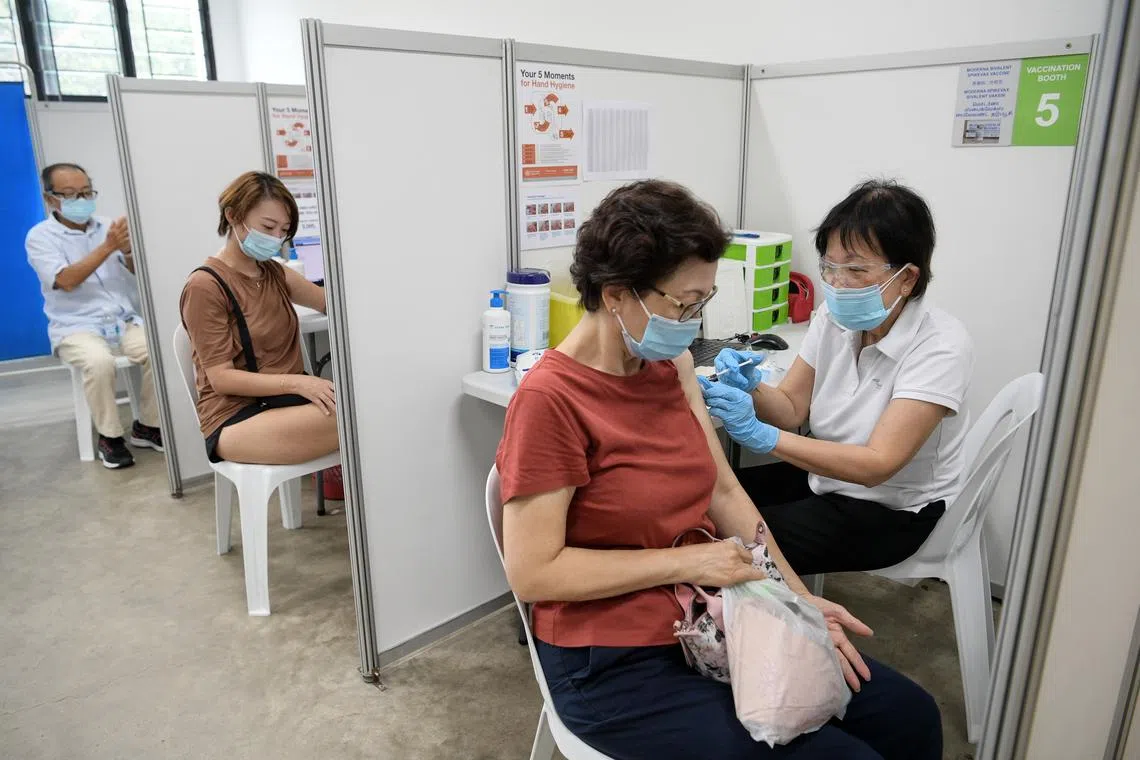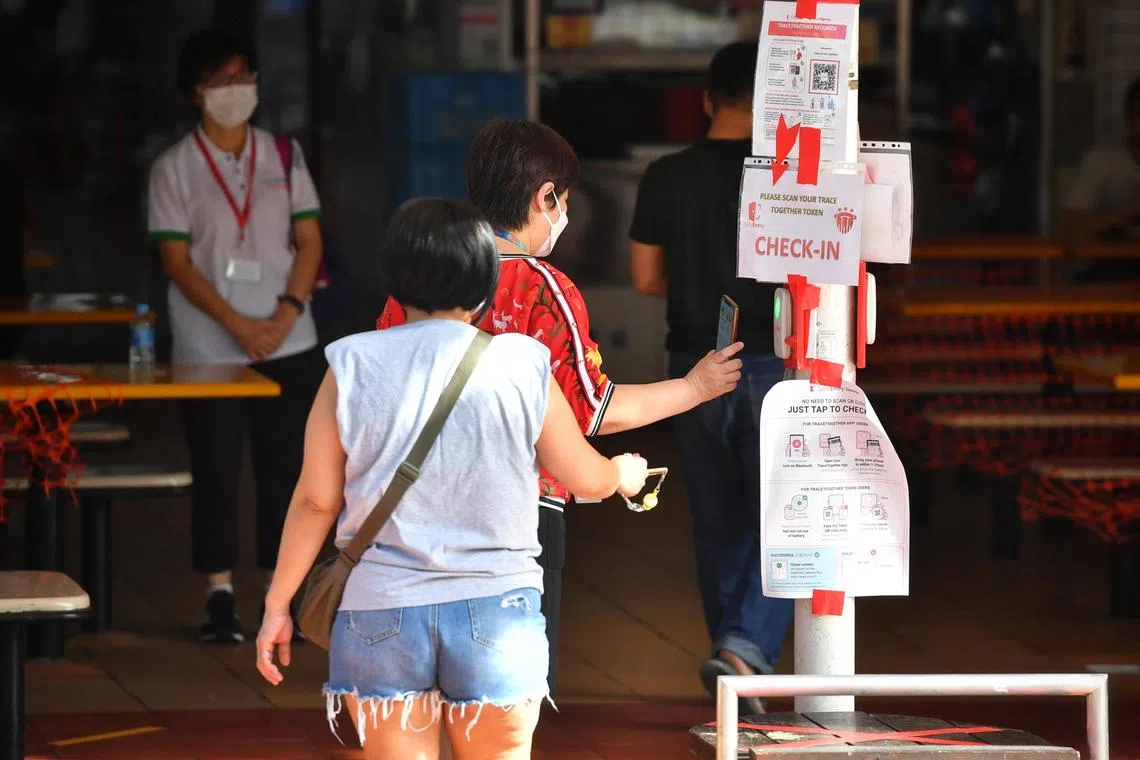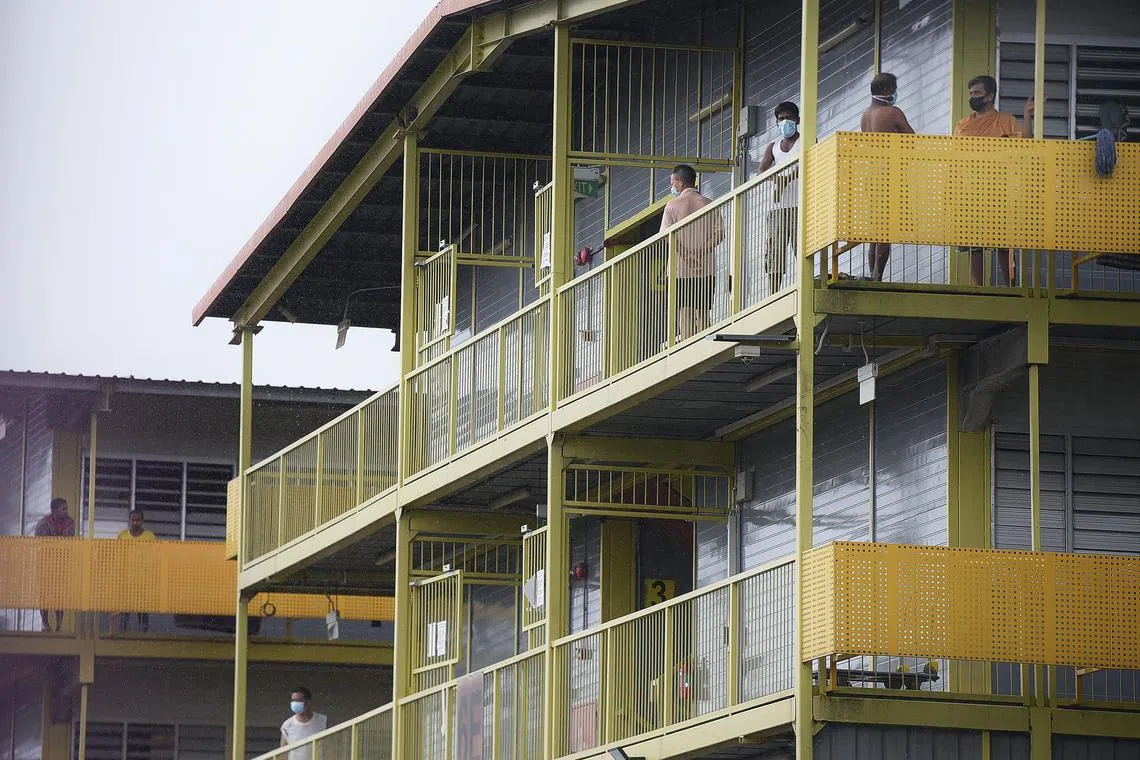S’pore handled Covid-19 well, despite a few shortcomings: Experts
Sign up now: Get ST's newsletters delivered to your inbox

Singapore was given top marks for having the foresight to procure vaccines early, even though this meant paying higher prices.
The Straits Times
Follow topic:
SINGAPORE – After three long years, the Covid-19 pandemic is over for Singapore, with masks no longer required on public transport national disease response system at a tranquil green.
The Government will soon be releasing an after-action review “to set out what we did right, what we could have done better, and how we can better prepare ourselves for the next pandemic”, said Deputy Prime Minister Lawrence Wong at the final multi-ministry task force (MTF) media conference on Feb 9.
This will be debated in Parliament “to make sure we collectively draw the right lessons and act on them”, he said. “The report is not meant to congratulate ourselves. It’s really meant to take an objective look at what has transpired over the last three years.”
Health Minister Ong Ye Kung noted that the Government also wanted to see if there were better ways of doing things, such as how to communicate with the public so as not to cause panic buying, which happened early in the pandemic.
Meanwhile, as this chapter on Covid-19 is closed, The Straits Times asked experts who were closely involved in fighting the pandemic over the last three years for their assessment of what Singapore did well, and what could have been done better.
Their verdict: Six out of 11 experts gave Singapore an A grade, three gave it A-, and two B+.
Where Singapore did well
The rapid recognition of a potential threat, and the immediate steps taken to mount an all-of-government response in preparation, tops the list of areas that Singapore aced.
The MTF was set up on Jan 22, 2020, a day before the first case of Covid-19 was diagnosed here. This was just a month after the newly emerging virus caused an outbreak in China, and well before the World Health Organisation (WHO) declared it a pandemic on March 11, 2020.
Even before the MTF, Singapore had on Jan 2, 2020, begun screening travellers from Wuhan, where the virus was first identified. Contact tracing and quarantine began with the first imported case.
Associate Professor Alex Cook, vice-dean of research at the National University of Singapore Saw Swee Hock School of Public Health, said contact tracing, isolation and quarantine were “bang on”.
These measures helped to slow the spread of the disease in the country, at a time when there was neither a vaccine nor known treatments to combat it. Without these, “we’d have lost control of the pandemic much earlier”, he said.

Measures like contact tracing, isolation and quarantine helped to slow the spread of Covid-19 in the country.
ST PHOTO: CHONG JUN LIANG
Delaying the spread till more was known about the disease and how to treat it, or until a vaccine became available, did much to reduce the number of those who became severely ill or died.
This prevented the healthcare system from becoming overwhelmed and kept it going,
Associate Professor Hsu Li Yang, vice-dean for global health at the Saw Swee Hock School of Public Health, said Singapore’s healthcare system “was stretched but not broken”.
The experts also gave Singapore top marks for having the foresight to procure vaccines early, even though this meant paying higher prices; for the speedy roll-out and high rates of vaccination in the population; and for betting correctly on the successful vaccine candidates.
This was a major factor in keeping deaths low and enabling the country to return to normalcy with confidence, knowing the majority were well protected against severe illness should they be infected.
Prof Cook said: “It really paid off to have reached deals to get enough stock in early to vaccinate as many people as possible, so we could move out of containment as early as possible, safe in the knowledge that mortality rates would be a lot lower.”
He said countries such as Thailand, which were able to contain the early spread of the disease like Singapore did but were months behind in vaccination efforts, saw more people dying.
Singapore had 1,722 Covid-19 deaths, or roughly 290 deaths per million population, against the global average of 870 deaths per million people. In this respect, it did better than 150 other countries or territories.
Professor Dale Fisher, a senior consultant in infectious diseases at the National University Hospital (NUH) who also chairs the WHO’s Global Outbreak Alert and Response Network steering committee, said Singapore’s response to the pandemic “was virtually textbook”, right from the early recognition of a potential threat to the readiness of the healthcare system.
He added: “A critical aspect of the response, in my view, was the community engagement facilitating a whole-of-community response. The authorities strategically communicated with all Singapore residents through a variety of media and spokesmen, from the prime minister to the MTF.”
Prof Hsu commended the measured response throughout the pandemic that had no “flip-flopping between lockdowns and opening up in 2020 and 2021, which would have been tremendously disruptive”.
He also praised the Government for its “proactive policies that protected the economy and households to a considerable extent during the pandemic”. He noted that there were eight Budget releases in 2020 and 2021, including a significant stimulus package in the form of the $48 billion Resilience Budget in March 2020.
Also earning kudos were ordinary people, for cooperating on policies, from mask-wearing to keeping interaction to a minimum, especially during the circuit breaker between April and June 2020.
Prof Cook said that had people here not heeded calls to stay home, mask up, reduce social interactions and be vaccinated, “without that community-mindedness, there would have been many more deaths”.
Where it could have done better
All the experts pointed to the management of the outbreaks in the foreign worker dormitories as well below par. Although concerns had been raised weeks before, no preventive measures were taken until the outbreak in the dormitories began in late March 2020.
Prof Hsu said that once that happened, “the response was to gazette the dormitories and essentially incarcerate the workers for many months, long after the risk to them was understood to have significantly abated”.

No preventive measures were taken till the outbreak in the dormitories began in late March.
PHOTO: ST FILE
His colleague, Prof Cook, added: “There wasn’t much that could be done once the outbreaks had started – what could be done to rehouse 300,000 men in low-density accommodation at short notice?
“But what I found most disappointing is what happened afterwards: the tight control over their day-to-day lives imposed for over a year afterwards. This came despite most dorm residents having been infected already and thus were at lower risk of another infection.”
Professor Leo Yee Sin, executive director of the National Centre for Infectious Diseases, said Singapore needs to have better risk assessments in preparation for future outbreaks, focusing on the weakest links.
She said these were “areas of dense living conditions and large congregations, learning from the lessons from dense dormitories (not restricted to migrant workers) and churches, et cetera”.
Singapore was also slow in roping in the private healthcare sector to fight the pandemic, and when it did, was slow in providing it with the necessary equipment and instructions, the experts pointed out.
Dr Asok Kurup, a doctor in private practice who chairs the Academy of Medicine’s Chapter of Infectious Disease Physicians, said that at the start of the pandemic, the private sector did not have enough diagnostic equipment and test kits.
“We should work as a nation together in a pandemic and not in silos,” he said. “For some time, polymerase chain reaction-based diagnostics were only available in the public space.”
Prof Hsu said the delay in providing medical support and diagnostic capacity in the early days could have proven costly in terms of testing and patient care. But he added: “This was subsequently rectified to great effect, including ramping up vaccination centres around the island.”
Dr Kurup felt that the duress experienced by front-line healthcare workers was not adequately addressed. Not only was the work intense, but they also had to test for Covid-19 regularly, and yet were “often bullied and abused by patients and/or relatives”.
He pointed out that after all their efforts, private-sector nurses were left out when the Government announced a special bonus for nurses in the public sector (of 1.7 to 2.1 months of their base salary) for their contributions during the pandemic.
The fallout from healthcare worker duress continues, said the experts.
Professor Paul Tambyah, a senior consultant in infectious diseases at NUH and president of the United States-based International Society for Infectious Diseases, said: “Conditions have worsened because of the exodus of (primarily but not only) nurses to fill gaps in other countries, and those leaving the profession from burnout.”
Professor Ooi Eng Eong, an expert in emerging infectious diseases at Duke-NUS Medical School, felt Singapore could have been bolder in lifting restrictions sooner.
“Lifting of control measures was delayed out of ‘abundance of caution’,” he noted. “This was despite the evidence already available at that time, that our vaccination rate was high enough to avoid the crunch of severe Covid-19 cases on our healthcare system.”
Prof Fisher said another area where Singapore could have done better was in addressing the fear of the mRNA vaccine, which was being used commercially in people for the first time. It could also have addressed vaccine hesitancy in seniors earlier.
People who have been vaccinated are far less likely to become severely ill or die should they get infected. Nevertheless, even today, about 8 per cent of the population have not received a single dose of Covid-19 vaccine.
Another gripe was complex and confusing instructions for infected individuals and close contacts that resulted in a lot of ridicule from members of the public trying to decipher what they were to do.
Prof Hsu added that it was a transient problem, since the Government remedied the situation with “Protocols 1-2-3” – people had to remember only three things to do – which simplified matters for the public considerably.
The verdict
The experts’ overall assessment: Singapore deserves a good grade for being able to keep deaths low and protect the economy, and while the healthcare system was stretched, it did not break. But there were a few black marks, such as the foreign worker dormitory outbreaks, that prevented an A+ rating.
As Professor Teo Yik Ying, dean of the Saw Swee Hock School of Public Health, said in summary: “On the whole, Singapore’s response was measured and guided by data and evidence.
“What stood out was also the forward planning that the whole of government exhibited, which explains why Singapore was one of the first few countries to vaccinate a considerable proportion of the population, to open our borders to resume international travel, and to have considerably fewer losses both in terms of lives and economy.”
A note of caution came from Prof Leo, who pointed out that WHO has not yet announced that the pandemic has ended.
She said: “In my mind, we have closed the chapter, but not the book on Covid-19 yet. The virus has not stopped evolving, so it is necessary to continue monitoring, although it is getting harder as testing globally has been reduced, and hence reporting to WHO has become less reliable.”
However, she said: “Barring unexpected surprises by the rapidly evolving Sars-CoV-2 virus, Singapore has reached a significant milestone of ‘normalcy’ with remarkable achievement.”


